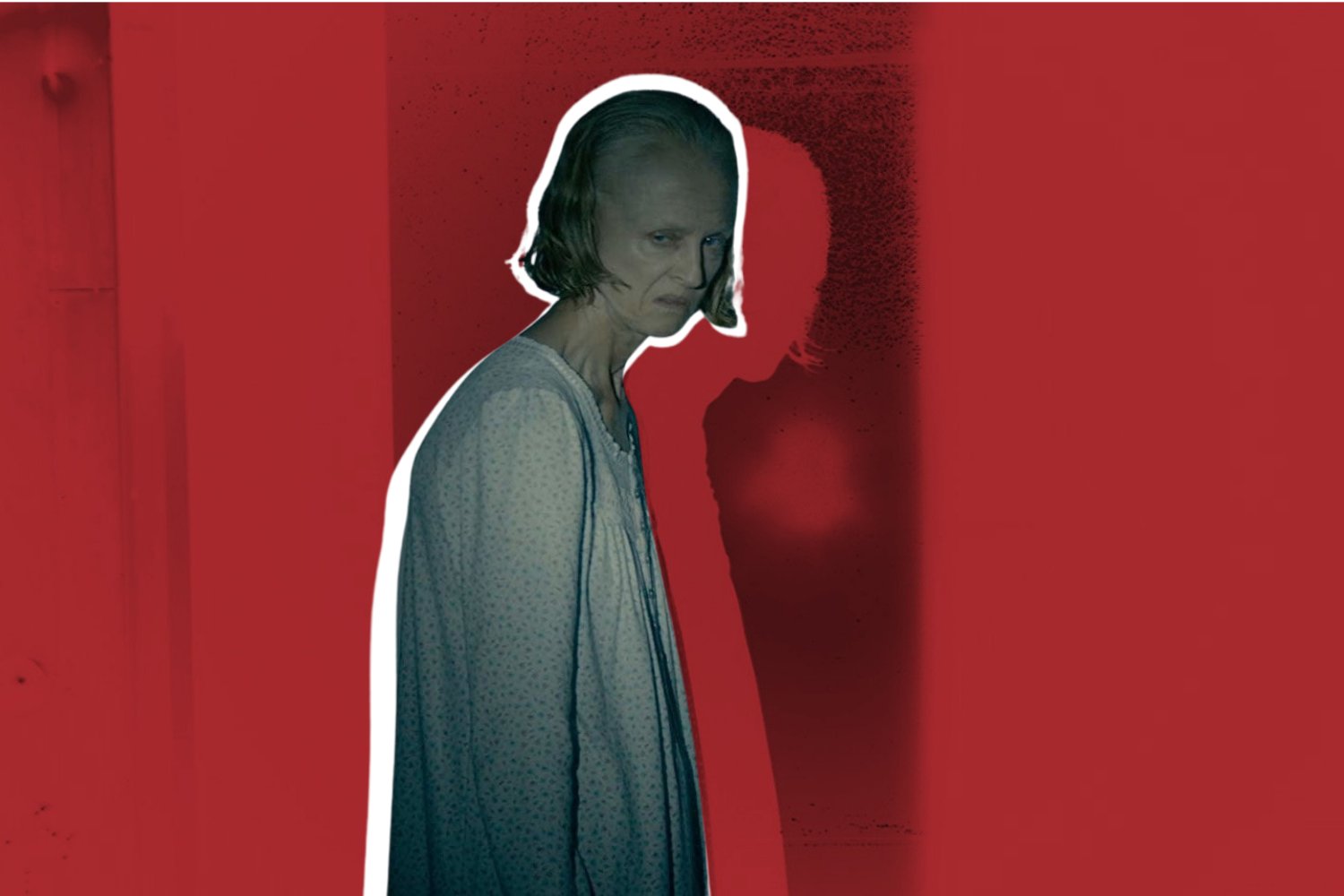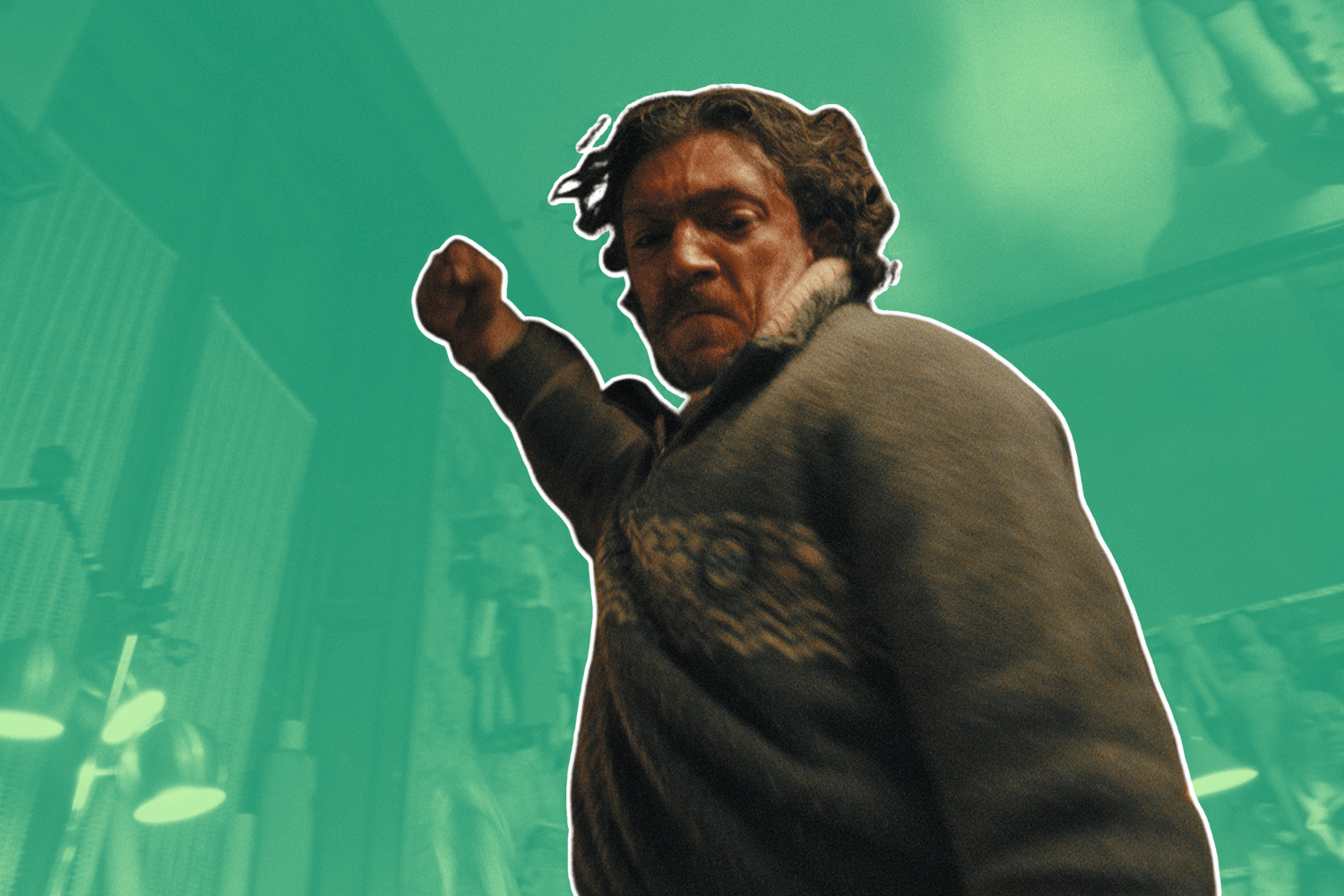Editorials
‘The Taking of Deborah Logan’ As Faux-Queer Archive
April 12th, 2021 | By Alex Hall

As artifacts of resilience and endurance, found footage speaks to the queer experience. The subgenre offers unique capabilities that affirm its queer characters through continuance, holding a radical potential for counter-archiving. Through adopting a cinéma vérité approach, found-footage horror films like The Taking of Deborah Logan (2014), Unfriended: Darkweb (2018), and Megan is Missing (2011) are forging new terrain depicting queer women onscreen. Contributing to a lineage of archive-making by queer artists, these found footage films create their own cinematic language for queerness in horror.
As Beverly Seckinger and Janet Jakobsen describe it, cinéma vérité unobtrusively captures “spontaneous, untampered-with ‘reality’ for direct, unmediated presentation.” Found footage’s guise of the “real” mimics the crude visuals of vérité to depict a fabricated reality. Exploring The Taking of Deborah Logan allows for a theoretical analysis of how found footage becomes an imitative marker of lesbian “authenticity” and “identity.”
The film, directed by Adam Robitel, follows a documentary crew as they observe Alzheimer’s patient Deborah (Jill Larson). Having taken on the role of caregiver, her daughter Sarah (Anne Ramsay) has sacrificed a life in Richmond, Virginia with her girlfriend, Shelly. As Deborah’s condition deteriorates, unexplained phenomena begin to transpire, causing Sarah and the crew to investigate a disturbing history of the occult, femicide, and possession.
History, Memory and Lesbian Ethnography
The documentary’s thesis on the fragility of memory and personal history extends its focus beyond Deborah, to Sarah’s past.
Located between the space of two films, an alternate narrative emerges. Initially framed as a medical documentary, the film inadvertently becomes a queer counter-archive. Posited through “outtakes,” Sarah’s footage becomes spontaneous, “authentic” expositions of lesbian ethnography. As an out filmmaker, Robitel’s lived experience further authenticates this narrative.
The confessional, intimate gaze of the found footage lens presents a unique variation on coming out. Outtakes articulate the various ways Sarah is outed to multiple recipients; the crew, camera, spectator, and her mother. Through their erasure of identity, both Alzheimer’s and homophobia require a repetition of coming out. By refusing to avert its gaze, found footage’s objective lens reaffirms Sarah’s homosexuality, acting as a surrogate figure of acceptance.
The Ethical Gaze
Issues associated with vérité can be applied to found footage regarding consent, ethics and the queer subject. Found footage retrieves and exposes moments of queer confession in ways that contribute to and complicate the archive. Through breaching fictional boundaries, the found footage camera violates privacy in ways that are unique to its queer subjects.
Early into The Taking of Deborah Logan, Sarah is caught, unknowingly, by the camera during a phone conversation with Shelly. The camera becomes an omniscient spectre documenting a private moment. The forced encroachment on personal space problematizes the spectator’s boundaries to the film’s queer women. Yet, it is through these moments that we witness lesbian intimacy onscreen.
The outing of a character in found footage horror reinforces its “truth-telling,” framing queerness as both spectacle and worthy of preservation. This situates the spectator as a problematic witness to moments not necessarily intended for a larger audience.
If we consider our introduction to Sarah, we see how queerness is laid bare under the found footage lens. In a moment of vulnerability, Sarah asks director Mia (Michelle Ang) if she wants her to present in a “certain way.” Despite being reassured to act “normal,” queer muscle memory insists Sarah perform a routine of “acceptable selves.” It is particularly indicative of the pressures to assimilate and the instincts of survival forged through dissimilation—an instinct vital for survival in Exuma, Virginia.
An Archive of Perishability
Found footage evokes a vulnerability by revealing its fragile materiality. Our ability to watch the events that threatened this footage speaks to an archive of perishability. The audiovisuals persist violations, becoming a valuable record of the fictional atrocities queer women, like Sarah, are subjected to.
But a great deal of queer audiovisual heritage has been lost through neglect and deterioration. These displaced histories align with found footage’s status as recovered artifacts. Through this premise of erasure, the faux-queer archive is allowed a level of verisimilitude.
Films like The Taking of Deborah Logan exist in conversation with this loss. As viewers, we participate in their imaginary preservation, reaffirming their status as “found.” The camera’s gaze insists we do not avert our eyes and instead, take active ownership as spectators.
But where does one locate authorship of found-footage and what does this mean for the way lesbian identity is crafted in films like The Taking of Deborah Logan? The title itself connotes an act of plundering, of wrongful “taking.” Found footage presents the possibility that one can ”steal” an image and manipulate its context through the colonization of amassed records.
The Perishable Body
Through the crew’s “capturing” of the Logan’s daily lives, the film demonstrates both women navigating control of their bodies.
Sarah’s documented loss of autonomy is inherently queer. Her pressure to appease her mother reveals a lifetime of erasure. Returning to her childhood home to care for someone who undermines her identity, we watch Sarah confront personal demons. We learn that as a child Sarah was sent to Saint Bernadine’s as penance for kissing another girl. Her removal from the home erases the queer body but also the heteronormative family unit, in the process.
As Sarah recounts this trauma, the intimacy of the lens articulates what queer theorist Ann Cvetkovich terms an “archive of lesbian feeling.” The idea that feelings behind an event are as valuable to archive as tangible objects. Queer archives are often archives of feelings.
Archiving the Queer Self
Since Barbara Hammer’s Dyketactics (1974), queer filmmakers have been radicalizing vérité techniques with subaltern aesthetics. Films like Sadie Benning’s video ‘dyke’ diaries, Cheryl Dunye’s The Watermelon Woman (1996) and Jonathan Caouette’s Tarnation (2003) experiment with techniques that rupture vérité’s heteronormative modes. Through “confessing” artfully crafted historiographies, these filmmakers obscure boundaries between their own authenticity and artifice.
Particularly, The Watermelon Woman, (a “dunyementary”) confronts the legacy of omission within archives regarding the histories of Black lesbians. Notably, Dunye was forced to craft her own found footage when searching the Lesbian Herstory Archives and the Library of Congress wielded minimal results.
This is how imaginary archives are crafted. It is a queer sensibility Robitel contributes to with The Taking of Deborah Logan. Because queer history is a history of obfuscation, there remains an inherited impulse to self-preserve against cultures of omission. With horror’s own lineage of erasure, glimpses of queer women within found footage become vital assemblages.
The Living Camera
If you consider this queer impulse to document, found footagee horror mimics and expands on this inclination. Its techniques become visual metaphors for the unsettled presence of queer women in film. Aesthetically, it possesses a transgressive quality juxtaposed against more hegemonic approaches.
The ambiguous visuals of films like Robitel’s queers the dominant gaze on their subjects, including those reifying heteronormativity. The “living camera” trembles at the sight of each character equally, rendering them all illegible and elusive.
In The Taking of Deborah Logan, the diegetic camera refuses a firm focus on Sarah, liberating her from a certain gaze through abjection. Initially, Sarah’s presence exists peripherally, relegated to the margins of the screen in poorly lit and framed shots. But as supernatural elements accelerate, Sarah dominates the film’s landscape—more than her mother, crew, or entity. Sarah is granted increasing agency, at times even taking control of the camera.
As outtakes, Sarah’s footage becomes “scraps” salvaged by the film’s horror schema. Inherently survivor-prone, the queer body persists—all in the name of found footage’s insistence to witness “truths.”
Queer Ephemera
In The Taking of Deborah Logan, lesbian history is traceable through objects. During a tour of their home, Sarah’s bedroom reveals itself as a time capsule. “We haven’t touched anything since she was a child,” Deborah notes, underscoring the room as a vault. The camera peers inside but resists trespassing beyond the threshold. “I was never really allowed in here,” Deborah recalls, speaking to the space’s queer sanctity.
The camera’s portable focus documents the ephemera of a queer childhood; illustrations of cars, softball and mitt, a basketball in a dusty corner. Cvetkovich notes that a counter-archive can act as a “resource that ‘comes out’ into the world.” Here, we experience private lesbian space as a public display, the interiors of Sarah’s preserved childhood are now revealed as objects of communal observation.
The viewer is allowed to survey the inventory, each item contextualizing the daily archive of Sarah’s life before her removal from the family home. “She loved cars,” Deborah remarks in the past tense, as though Sarah’s nonconformity is itself an artifact of the past.
These material traces encourage us to decipher her past, allowing the lesbian archive to become a site of communal fantasy.
Conclusion
By appropriating codes of cinéma vérité, Robitel presents new ways of exposing lesbian “truths.” The camera ceremoniously captures Sarah by inadvertently archiving the queered landscape of her personal history.
The Taking of Deborah Logan is unique in that it reveals a crucial mode of seeing and representing lesbians on screen, one that refuses to condemn women like Sarah to the closet, or the grave. While issues of an ethical gaze add complexity to the subgenre, found footage’s insistence to witness and preserve is a testament to Sarah’s own survival and of queer continuance.
Visit our Editorials page for more articles like this. Ready to support more original horror criticism? Join the Certified Forgotten Patreon community today.


